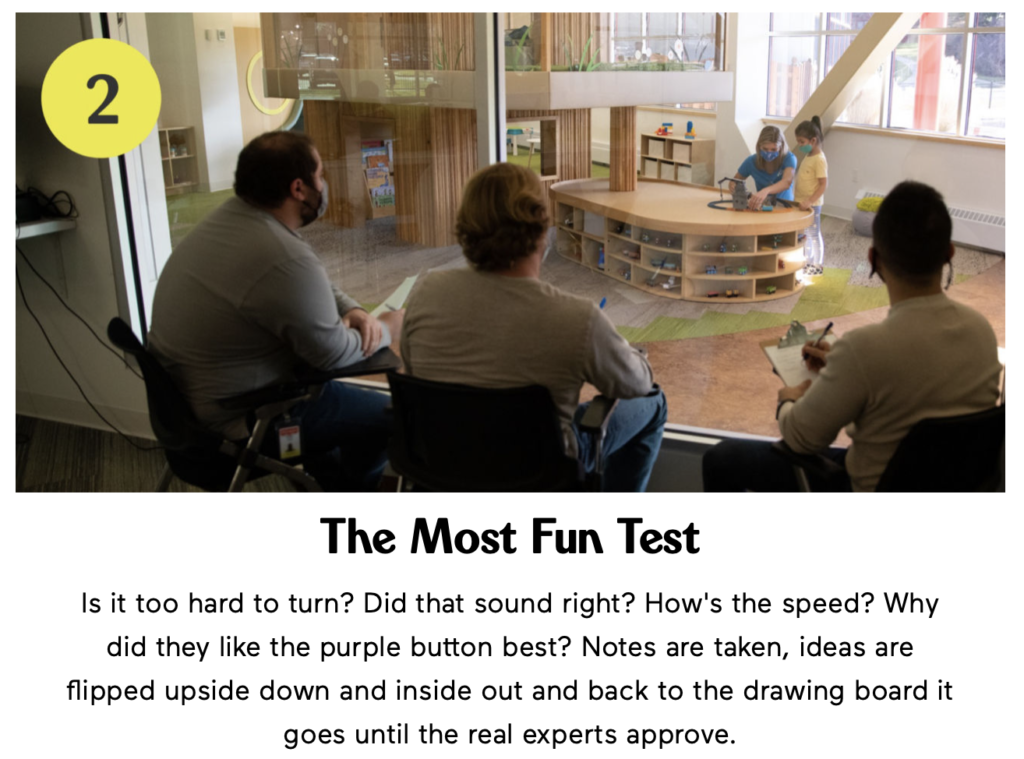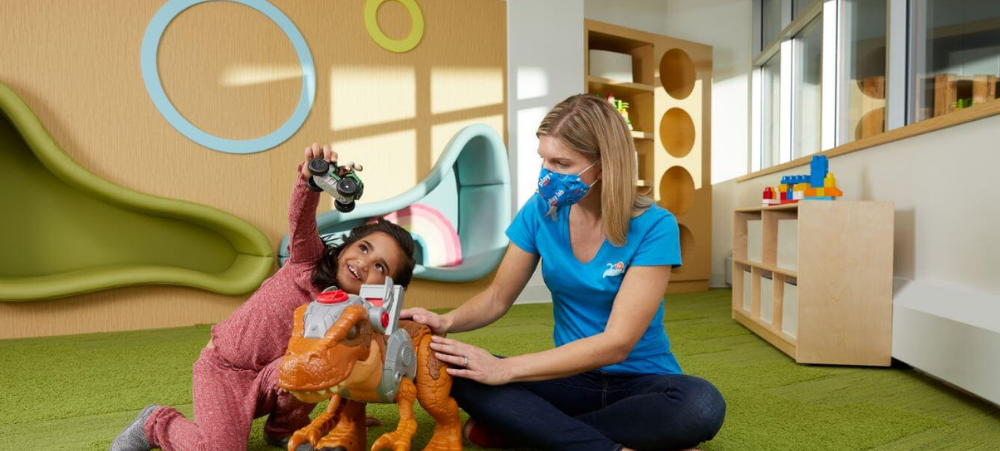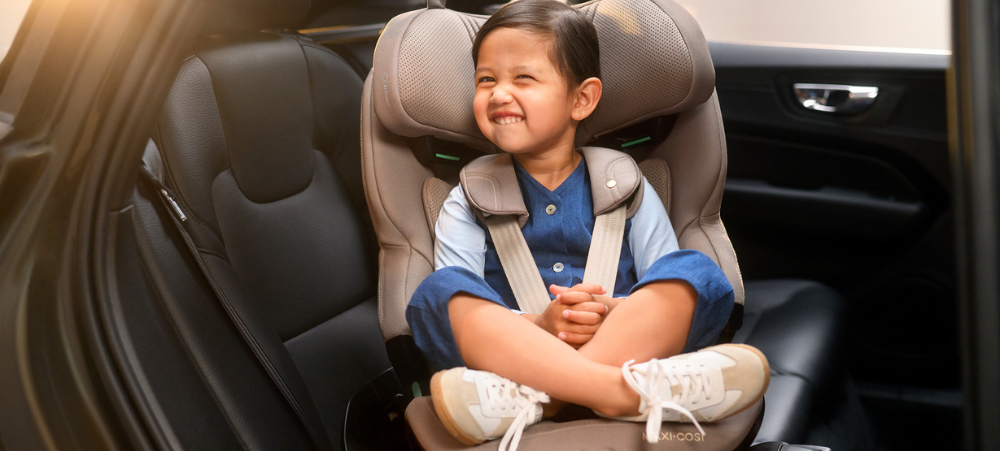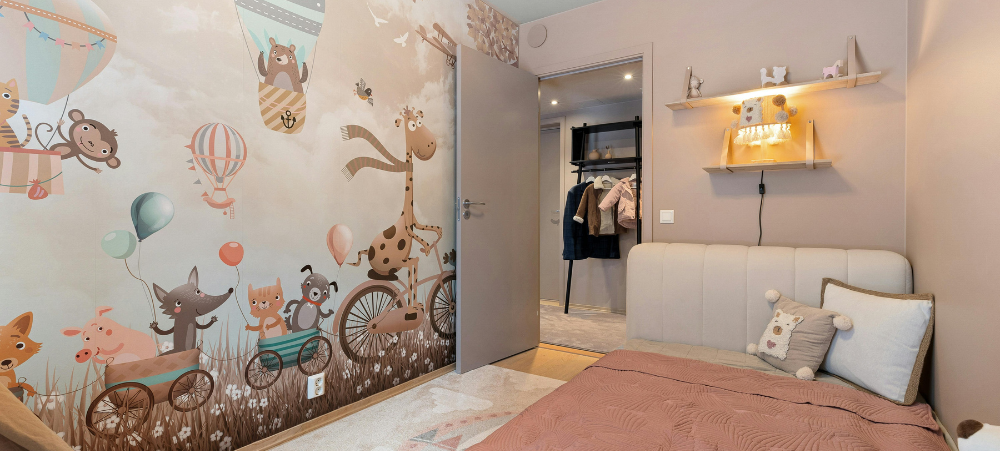Behind-the-scenes at Fisher-Price’s unique research space – including a huge treehouse, and eye-tracking goggles
When Herman Fisher first started making toys in 1930, he knew that to put them to the ultimate test, he would need to call in the real experts: the kids themselves!

Fast-forward to 1961, when the Play Lab developed from being half of Fisher’s office space, to having its own dedicated playroom-style environment, where researchers could observe children’s every move from behind a one-way mirror.
Today, it has evolved into a unique and innovative 15,000sqft area in the Fisher-Price’s New York headquarters, where they host around 2,500 kids and 1,850 parents a year in various methods of research. Additionally, 450 toys and initial designs are tested each year in three inspirational, child-friendly rooms, by little ones aged 0 to five.
Here, The Senior Director of Early Childhood Development Research, Deborah Weber, PhD, who oversees the Play Lab reveals what really goes on behind the scenes – and how taking part is like every child’s dream come true!
What happens inside the Play Lab?
Deborah says there is a real “wow” moment when children first walk into the Play Lab, which has four rooms; three for children and one for parents.
Each is designed specifically for watching little ones play as naturally as possible, making sure it’s an environment in which they feel welcome and comfortable.
The Right-at-Home Research Lab is designed to look and feel like an open-plan kitchen-dining-living room space with carpet, hardwood, linoleum and tile floors to test toys such as walkers and scooters.
While the Pre-Cool Lab, for preschoolers, is like a classroom. There are comfy, cozy places with couches for content viewing and reading. And there are open spaces for running, riding and swinging. Everything is child-size, including the tables and chairs, and the toilets and sinks.
Deborah says: “The first thing children do is climb the huge life-size treehouse! They can then pick and choose what toys they want to play with from the open shelves – books, toys, art supplies, dolls, and dress up clothes.
“Development teams observe the children via one-way mirrors and video and audio systems. Inside the preschool and discovery labs there are 360-degree cameras and audio wired into the walls, floors and tables so the product development teams can watch the play patterns of children from all angles.
“They’ll watch that hands-on play to see whether something about the toys isn’t working quite right, or whether certain things aren’t working right well or don’t resonate with the children.”
What are the toy developers looking out for?
Every Fisher-Price toy goes through a six-month cycle of testing, and improving, before it comes to fruition.

Children can be brought in to test products as soon as the initial ideas stage – they might be shown photos or a prototype, so researchers can gauge their interest and thoughts.
Deborah says: “During this time, the researchers will be looking at many different aspects. From what draws a child’s immediate attention, to the types of play features that are intuitive for them – do they know how to play with it, without being taught. How long the child plays with the toy, and the level of engagement.
“Does it make them smile? Does it make them move? Do they sing along with the music? Do they want to try out all the different features?”

Another key factor for researchers is whether children play with the toy as they intended, or perhaps they put their own spin on it.
Why are parents’ views important?
While the kids are the main testers, Fisher-Price is keen to have parents’ views too. This is carried out either in the Play Lab, or in homes, something that was carried out virtually during the pandemic.

They’re asked for feedback on toys, including how children play with them around the home, and what interests they have.
Deborah says: “We can then take their perspective into consideration and help design and develop toys that are first and foremost meaningful, relevant and developmentally appropriate for children, but also that resonate with the families and parents in regards to the experiences that they want to expose them to.”
How is the Play Lab moving forwards?
Just as toys evolved, how Fisher-Price observes children play is evolving too. This is the first year the brand has fully integrated face reader software analysis as well as eye-tracking research.
Face reader software allows researchers to take videos of the children and then run through the analysis to see how they were feeling when they were engaged and playing with the toys.
And with eye-tracking, there’s a camera pointing to each eye to see the features in toys or watching content that children are looking at that are a visual prompt to start playing or interacting with it.
Deborah says: “Fisher-Price is also now working with TV show developers, using eye-tracking to see how kids watch that content, and then go to the toys and play. So how does the show inspire their play – or how does their play inspire new content?
“We’ll put the goggles on the kids and play certain clips for the first time for them and just kind of take in what they are gravitating towards, what is really magical for them? Where are their eyes going? When are they losing interest and looking away? It’s surprising what they’re focusing on. “
How are the Play Lab findings beneficial to parents?
Busy lifestyles mean adults simply don’t have the time to spend hours researching every toy their child wants. And this is especially true during the pandemic, which due to lifestyle changes, may have seen many little ones falling behind with their developmental milestones.
So it’s reassuring that every toy Fisher-Price designs has the brand’s Early Childhood Development & Learning Framework at its core, upholding its commitment to babies’, toddlers’ and preschoolers’ physical, cognitive, social, and emotional development.
Whether it’s the Steady Speed Walker for little ones who are starting to take their first steps, or a dancing penguin to help with their ABCs, Fisher-Price can help caregivers bring their little ones who may have fallen behind during the pandemic, back up to speed.
Rachel Wachowski, child development researcher, says: “Parents can rest assured when they buy a Fisher-Price product that we spend the time and rigor to ensure that each toy we design and develop is easy and fun to use, is engaging and will keep the child’s interest over time.”
How has the global COVID-19 global pandemic effected children and how can Fisher-Price toys help?
The Covid pandemic caused huge disruptions to families’ routines across the globe. From parents working from home, schools and nurseries closing, mask wearing and social distancing, each measure taken against the pandemic had an impact on caregivers and their children.
This has led to concerns from caregivers about how the outbreak may have impacted their little ones reaching important milestones.
Deborah Weber says: “The research rigour that is put behind each individual toy’s design and development as well as the foundational approach of developmentally appropriate play patterns focusing on whole child development utilising our ECD skill framework, means parents who are concerned the pandemic could have negatively affected their child’s development can really take comfort in the proven ECD benefits of Fisher-Price toys.”
targeted toward Parents.
We understand that there are many aspects that encompass a Mother, Father or Child and strive toward providing resources and services that accommodates
this.
Our content is aimed to inform and educate families on issues starting from
pregnancy through to the challenges of the teen-age years.
- When it comes to Breast Cancer, everyone’s journey matters - September 30, 2025
- Teaching Kids Gratitude: Simple Everyday Practices for a Positive Mindset - September 30, 2025
- Raising Emotionally Resilient Kids: Helping Children Navigate Life’s Ups and Downs - September 30, 2025





